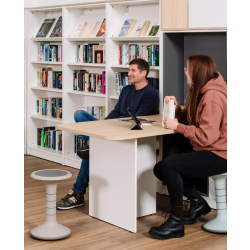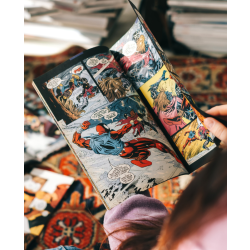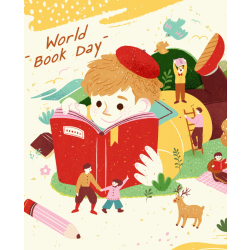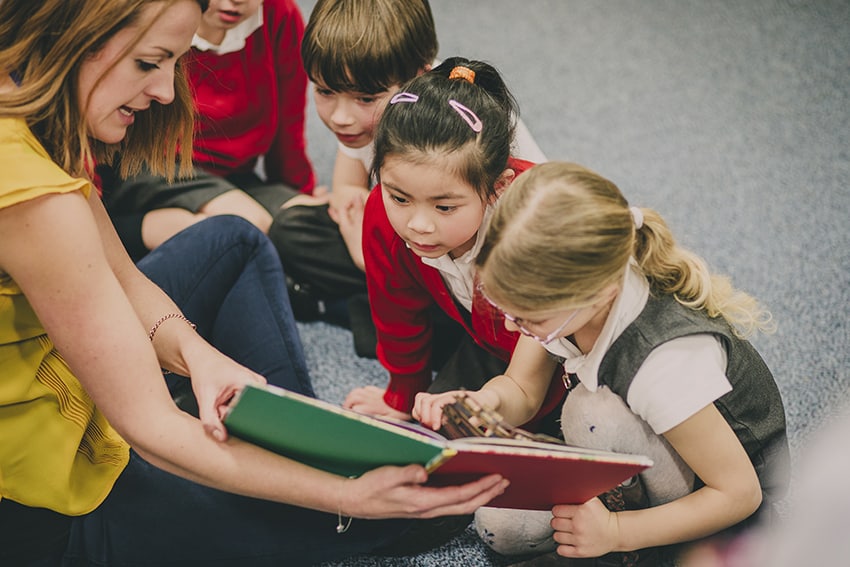

“Let there be half an hour of storytime at the end of the school in primary schools up and down the country. Make this the half-hour they all long for, that they don’t want to be over. Let the children go home dreaming of the story; reliving it; wondering.”
Michael Morpurgo, author.
The Power of Storytelling
I asked around and 100% of my family, friends and colleagues were able to recall books they had enjoyed as young children – the overwhelming majority of those books had been read to them aloud.
My own fond memories of my father reading Enid Blyton’s Famous Five, on camping holidays by torchlight, with voices for each character, stayed with me into adulthood and made me impatient to read the same stories to my young sons.
Reading aloud is the foundation for literacy development. It is the single most important activity for reading success. (Bredekamp, Copple, & Neuman, 2000)
Reading aloud allows children to immerse themselves in the characters, the setting, and the story – little do they know that when they make those connections they are learning to think and act like good readers.


Our research highlighted 5 key benefits of telling children stories:


The big 5...
- Broadens horizons
- Creates community
- Tackles challenging topics
- Provides a special environment
- Is all-inclusive
Once upon a time...
Children can listen on a higher language level than they can read. Reading aloud makes complex ideas easier to understand and exposes children to vocabulary and language patterns that are not necessarily a part of everyday speech.
The Centre for Literacy in Primary Education (CLPE)[1] shared research from a 2021 survey of primary school teachers. Most teachers (82%) are finding ways to read aloud to their classes at least weekly. The majority on average, are reading daily (58%).
The pattern was similar across the year groups although teachers were more likely to read more frequently with the youngest children.
[1] https://clpe.org.uk/system/files/CLPE%20Reading%20for%20Pleasure%202021_0.pdf
Reading aloud by age group:
| Daily | Weekly | Occasionally | Not at all | |
| All | 58% | 23% | 13% | 5% |
| Early Years | 68% | 25% | 8% | 0% |
| Y1/2 | 54% | 30% | 13% | 3% |
| Y3/4 | 56% | 22% | 17% | 6% |
| Y5/6 | 61% | 19% | 15% | 5% |
Data taken from The Centre for Literacy in Primary Education (CLPE)
"One of the greatest gifts adults can give - to their offspring and to their society - is to read to children" - Carl Sagan,
Reading aloud by age group:
All children need to be exposed to a wide range of stories and books from a young age. “They need to see themselves as well as other people, cultures, communities in the books we read to them.”[1] (Barton & Booth, 1990).
“Selecting a wide range of culturally diverse books will help all children find and make connections to their own life experiences, other books they have read, and universal concepts.”[2] (Dyson & Genishi, 1994).
[1] Booth, David, and Bob Barton. Stories in the classroom: Storytelling, reading aloud and roleplaying with children. Markham, Ont.: Pembroke Publishers, 1990.
[2] Dyson, Anne Haas, and Celia Genishi. The Need for Story: Cultural Diversity in Classroom and Community. National Council of Teachers of English, 1111 W. Kenyon Rd., Urbana, IL 61801-1096., 1994.
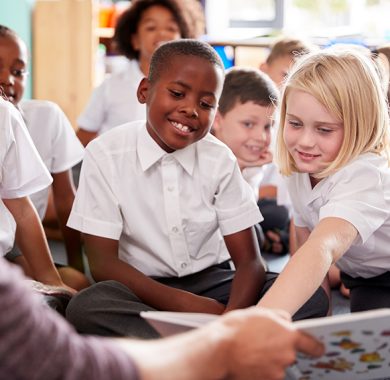

Reading aloud by age group:
Reading aloud to children has benefits for adults too. The quality time spent together strengthens teacher-pupil and pupil-pupil relationships and promotes bonding, providing opportunities for children to develop their social, communication and interpersonal skills.
Being a part of the same shared experience creates stronger emotional connections and helps children to gain a lifelong love of reading.
Reading aloud by age group:
Reading a story aloud is a gentle way of exploring with children particular emotions and can help them to recognise and understand their feelings and also how others feel. By reading aloud together and then encouraging discussion, stories can help children feel more comfortable discussing their emotions in front of others.
“They need to see how characters in books handle the same fears, interests, and concerns that they experience.”[1] (Barton & Booth, 1990)
[1] Booth, David, and Bob Barton. Stories in the classroom: Storytelling, reading aloud and roleplaying with children. Markham, Ont.: Pembroke Publishers, 1990.
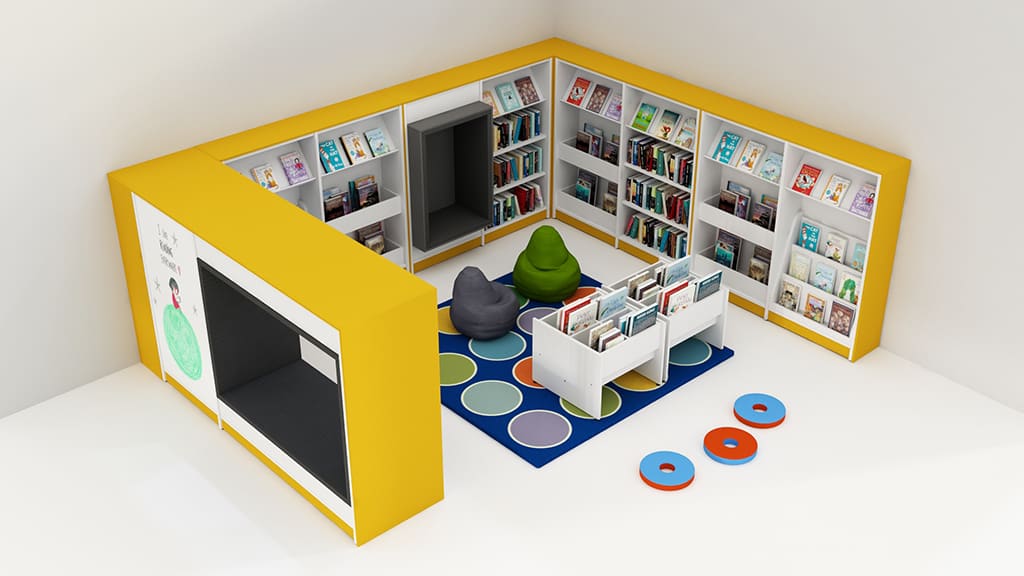

Tackles challenging topics
A study in 2019 by the National Literacy Trust and Nottingham Trent University[1] found that children using their school library were more likely to read for pleasure and had better reading and writing attitudes.
What sort of special environment should we create for our children, to encourage them to read and to keep them reading? Creating dedicated, inviting, comfortable and welcoming physical environments is important for connecting positive experiences with reading and literacy.
[1]https://cdn.literacytrust.org.uk/media/documents/Libraries_project_review_2019_-_final.pdf
All-inclusive – supporting literacy skills, creating a reading culture
Gathering groups of children together to listen to a story exposes less able readers to the same rich and engaging books that fluent readers can read on their own, and encourages them to explore other titles and become better readers.
A reading culture can be strengthened by children hearing and seeing a trusted adult enjoying and sharing the contents of a wonderful book. Enthusiasm is infectious and children should be encouraged to share the love of any materials that interest them.
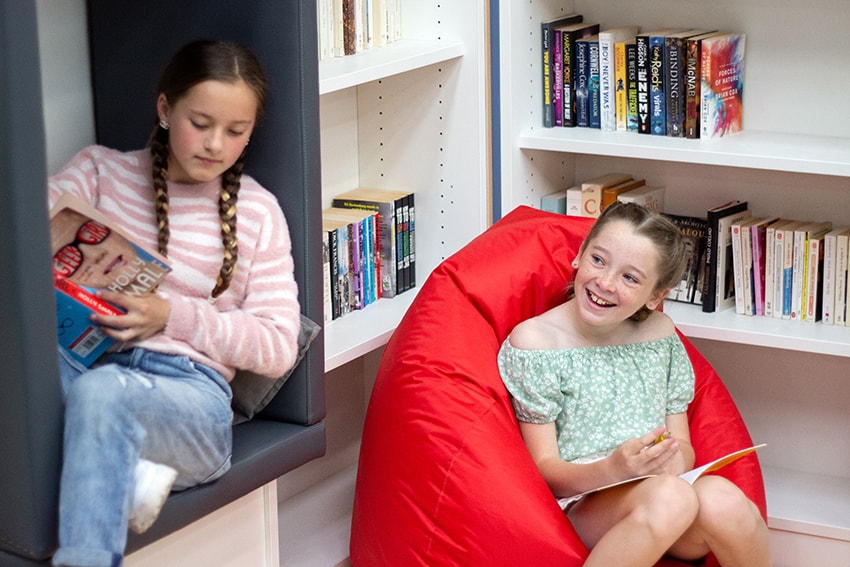

Reading aloud by age group:
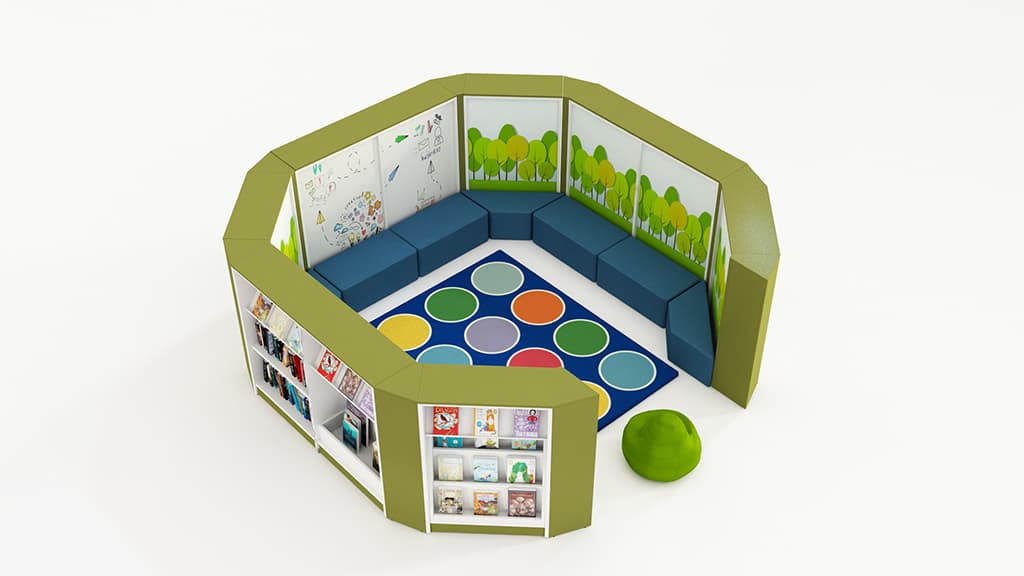

Creating stunning environments to support the delivery of storytelling in primary schools is part of WF’s mission to support literacy in education.
References
[1] https://clpe.org.uk/system/files/CLPE%20Reading%20for%20Pleasure%202021_0.pdf
[1] https://clpe.org.uk/research
[2] Booth, David, and Bob Barton. Stories in the classroom: Storytelling, reading aloud and roleplaying with children. Markham, Ont.: Pembroke Publishers, 1990.
[3] Dyson, Anne Haas, and Celia Genishi. The Need for Story: Cultural Diversity in Classroom and Community. National Council of Teachers of English, 1111 W. Kenyon Rd., Urbana, IL 61801-1096., 1994.
[4] https://cdn.literacytrust.org.uk/media/documents/Libraries_project_review_2019_-_final.pdf
[5] https://www.headteacher-update.com/best-practice-article/how-we-created-an-inspiring-school-library/222023
[6] https://literacytrust.org.uk/resources/primary-literacy-guide-202021/
[7] https://ifs.org.uk/publications/7687
[8] https://ifs.org.uk/uploads/publications/bns/BN169.pdf
[9] Reading Aloud to Build Comprehension (Judith Gold, Akimi Gibson, 2016)


